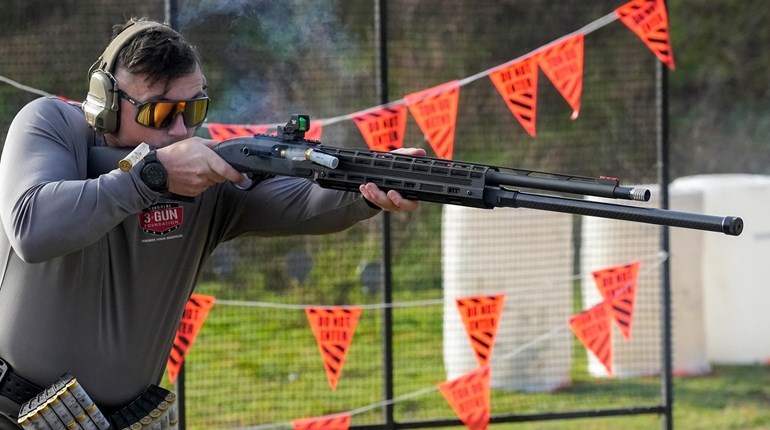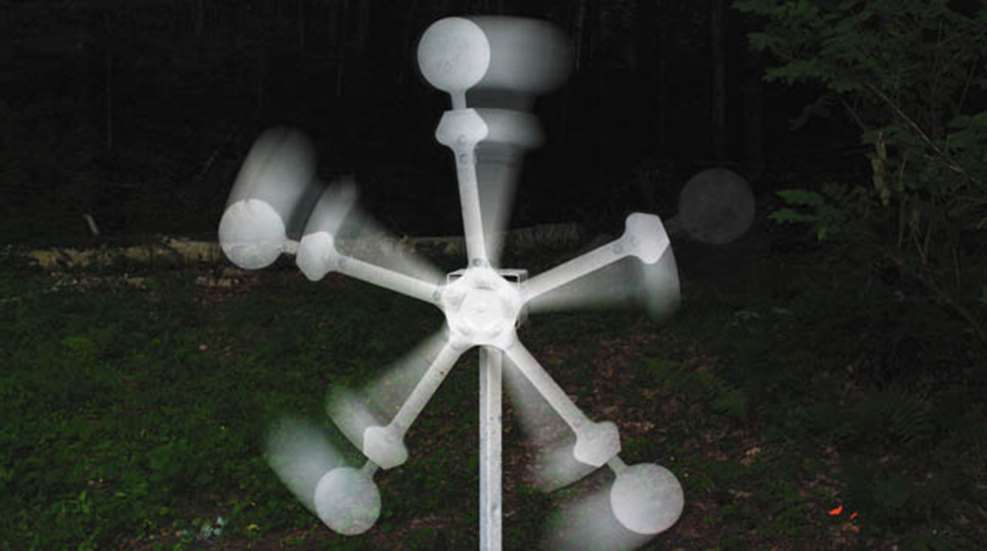
Photos by Bryce M. Towsley
The best 3-gun stage designers have a bit of evil in their souls. They always find a way to make even the most common targets difficult to hit. However, the numbers and types of targets are not infinite, and some of the same ones show up again and again in matches. Designers may find a way to make them unique and difficult, but the basics remain.
To learn which targets to look out for, I conducted an informal poll of about a dozen of the top shooters. I also enlisted the help of Mike and Travis Gibson of MGM Targets, both keen competitors and the guys who make a lot of steel targets that habitually frustrate so many 3-gun shooters. In addition, I put the question up on a few Internet forums frequented by avid 3-gunners.
Everybody had a favorite target to hate, but a clear pattern emerged as to what are some of the toughest. I called upon top shooters for advice on how to handle the situations these targets present. Even if you don't compete in 3-gun matches, this info from the pros can help you become a better shot with any of your self-defense and tactical firearms.
Double Spinner
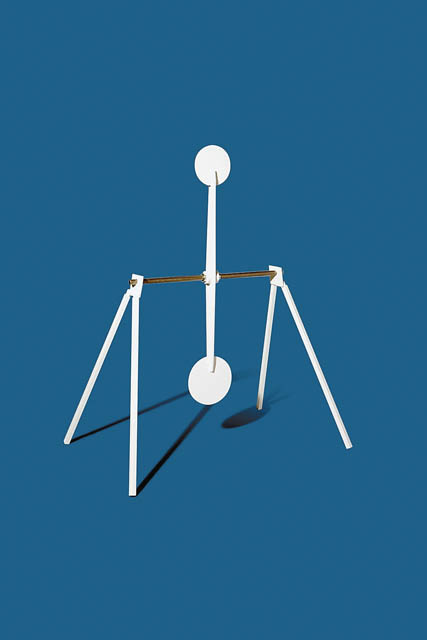
The Target
The Double Spinner is without a doubt the most talked about handgun target in 3-gun shooting. Many of the responses I received about this target ended with "it didn't go well" or "it wasn't pretty." Team FNH USA's Tasha Hanish simply said, "It is an ego-destroyer."
It's a simple target: two plates on a long arm with a pivot in the middle. One plate is larger and heavier than the other, so it's at the bottom. The idea is to get the thing rocking and then build momentumuntil the arm makes a complete revolution around the pivot. Easy enough—at least in theory.
The Strategy
It's all about timing. Hit the bottom plate and the top swings forward; when it reverses, hit the top plate. Alternate your hits, watching the target to gauge the timing. The problem is, watching the target takes your eye off the front sight, which leads to misses. Or you get target panic due to the timing issue and yank the trigger, which also leads to misses.
There is a tendency to shoot at the bottom plate only, since it's a bigger target. But, that doesn't work. The key is shooting both plates so you don't lose too much time waiting for a plate to get into position.
Frustration sets in when you just need one more hit to close the deal and the target loses momentum with a miss. What's really maddening is to get to the climax and run out of ammo. The time it takes to perform a mag change erases all your hard work.
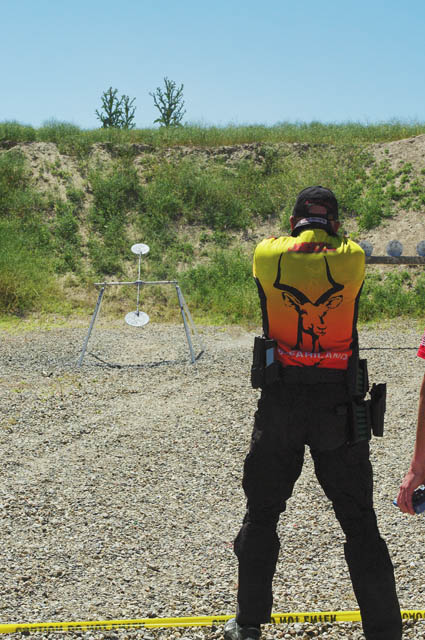
Another common mistake occurs when the target is almost ready to go over and you shoot the backside of a plate. If the target needs only a slight push to spin, this works. But, if you misjudge the timing and the plate has already started toward you, a bullet smacking against its movement destroys momentum and you're back to square one.
The experts' secret? Simple, really. Start with a fresh mag if possible. Be very aware of the timing—this is not about speed, it's about hitting a plate at exactly the right moment. That's why this target frustrates speed shooters.
If this target's rocking, you better come knocking! Shoot the bottom, then the top, then the bottom, and so on. Make sure your timing is right so you get maximum energy transfer from the bullet strike. This directs energy to moving the target, not fighting it. If you are very good, you can double tap the plates.
I watched Dave Neth absolutely destroy one of these in the 2010 MGM Targets Ironman match by hitting the bottom plate four times and the top plate three. He spun the target in about 3 seconds, which is darn close to a record. But, he is the master of this target and one of the best 3-gun shooters who's ever been in the game.
Finally, don't miss—ever.
Whirly-Gig or Texas Star
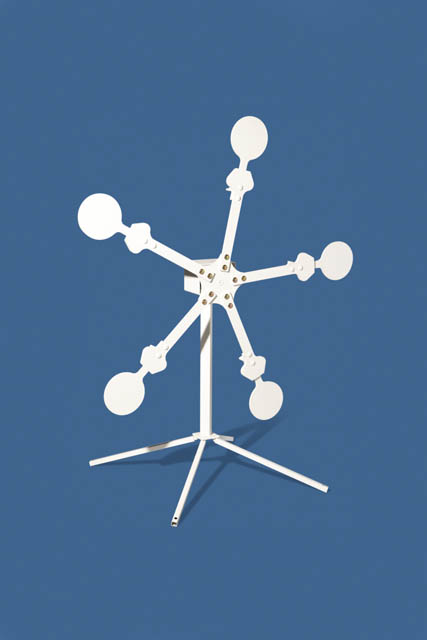
The Target
This is a five-armed star with a pivot in the center. Each arm has a plate target that will fall off when hit. As the weight distribution changes with the falling plates, gravity starts the target spinning. Speed and direction will vary every time you knock off another plate.
The Strategy
I remember approaching a stage with two of these targets side-by-side at the DPMS/Brownells Tri-Gun Challenge in Minnesota a few years back. Bruce Piatt was standing beside me as I waited my turn.
Piatt is the master of shooting steel with a handgun, so of course I picked his brain. He explained in detail a winning strategy. I went in with full confidence and hit the first target with my first shot. But then I missed the next one and panicked. I started chasing the targets and yanking the trigger. It wasn't long before I had a pile of empty magazines under my feet and a laughing crowd behind me (at least in my mind they were laughing). I didn't time out, but it was close. Bruce was shaking his head as I walked back to the line. He grinned and said, "Maybe I forgot to mention it, but part of the strategy is to actually hit the target." No kidding!
When responding to my questions, Piatt wrote about missing: "One miss and the timing is all thrown off, the fact that the target is moving attracts your eyes off your sights and onto the target, leading to more misses and the crucial timing aspect is all thrown off."
I am sure he was remembering my performance when he wrote that.
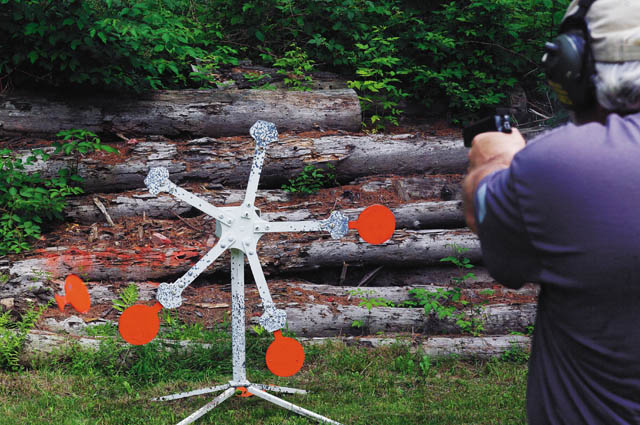
That's the key with this target—hitting it. I know, that's the key with any target, but with this one, a miss is a very big game changer. There are two basic strategies and both depend on timing and on hitting every shot.
The first and most-common strategy is to simply start at the top and then work down, zigzagging back and forth on each side. The idea is to change the balance as little as possible and then quickly counteract that change with the next target. Done, well and fast, the target will barely move. But, miss or shoot too slow, and it's all over.
The other strategy is to shoot your way down one side, then pause at the bottom and wait for the targets to swing into your sights and pick them off as they pass. With both methods, if you miss, new strategies will come into play.
James Darst suggests this approach after a miss: "Quickly analyze the direction and shoot a plate that will negate the spin direction, this is hard and it takes a lot of self-control to leave a plate that you think you can hit but will only cause the spin to increase in speed."
Finally, when all else fails, concentrate on the plate as it reaches its peak of movement. There will be a slight pause when you can shoot. Or, try to get ahead of the moving plate with a little lead. Do not chase after them, spraying and praying. I know from experience that God doesn't answer those prayers.
Swinger with Multiple Clays
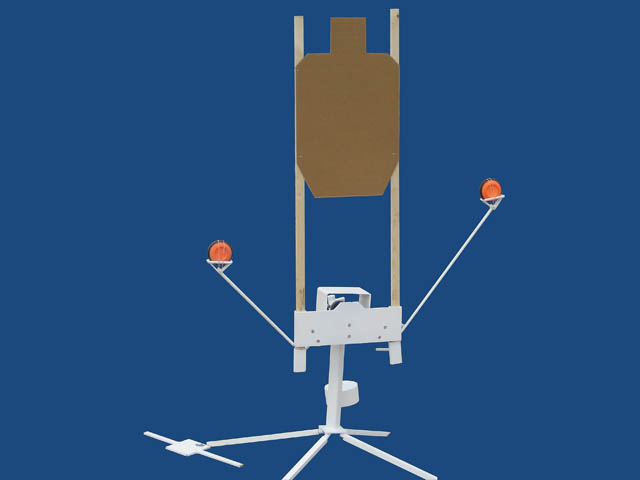
The Target
This target is tripped by shooting a trigger, usually a plate or a popper. This allows the swinger to activate, with the targets swinging back and forth.
The Strategy
If you have a full range of motion, the key is to shoot one target as it pauses momentarily to switch directions. Then pick up the other at the other end of the swing. But, it's often complicated by using hard cover to block each end of the arc, the place where it's easiest to shoot the target. In that case, you must take the moving targets in the center of their travel, which is tougher.
Again, don't try to chase the targets—especially if you have a no-shoot hard cover, because you will hit it every time and those penalty points add up.
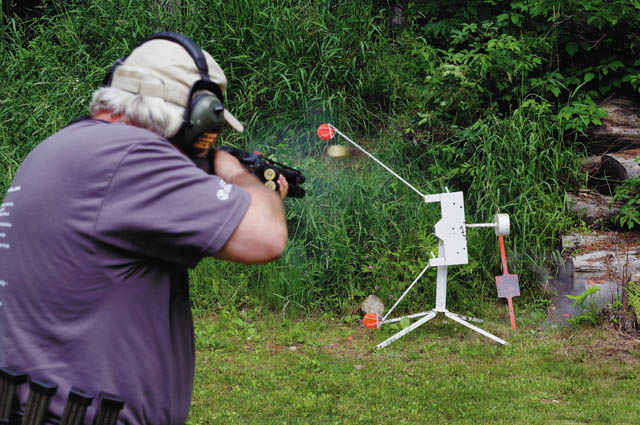
Point shooting—that is stabbing the gun at where the target is headed and pulling the trigger—works best for me and seems to be the preferred method of the better shooters. Sustained-lead or pass-through shooting does not work well with this target. Don't look at your sights or the bead. Focus on the target and let the computer in your head do the calculations. If you are thinking about the shot, you will miss.
When the competition includes moving targets like this or flying birds from trap machines, many shooters really struggle. According to almost everyone who responded, the key to getting better at moving targets is to spend some time with your competition shotgun on the sporting clays, skeet or 5-stand range. You might get some snide remarks about the gun from some of the stuffier shooters, but you will also likely get some very good advice from many others.
Popper with a Clay Flipper
The Target
This is a very common target in 3-gun. It's a simple popper that hits an arm that throws one or two clay targets into the air as it falls. As a stand-alone, it's an easy target. You simply shoot the popper and wait for the clay target to reach its apex, where it pauses momentarily, and you break it. The trick is when there are multiple targets, often mixed in with standard poppers.
The Strategy
The problem is the popper takes time to fall, and if you simply wait for it to topple and launch the clay target, you will rack up too many seconds on the scorecard. Most shooters will run multiple popper targets and then come back and pick up the clay birds in the air. The best can run up to five targets and have five or more clay birds in the air at once. But, how many targets you knock over will depend on factors like the wind and how the clays are flying. At the 2010 Ironman, the wind was blowing so hard the clays were flying back over some shooters' heads before they could get on them. The key here was to shoot one popper and pick up the clay targets before going on to the next. Because the poppers were close to the shooting line I also backed up to give me both more time on the clays and a larger pattern. I would like to claim credit for the idea, but I watched Neth do it first and copied him.
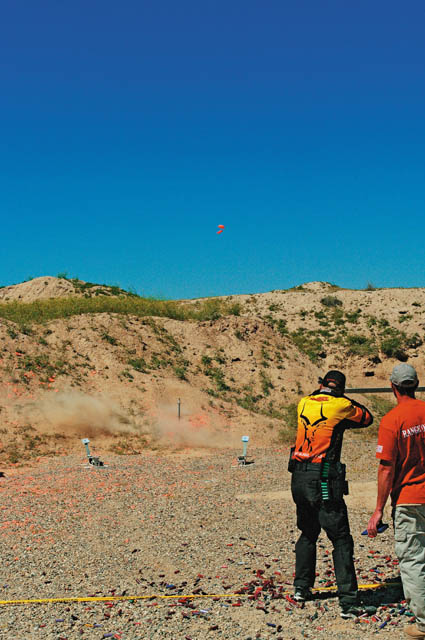
It's all a matter of strategy here: Think about how this is going to play out. Make sure you have enough ammo. There is nothing more embarrassing than having clay birds in the air and an empty shotgun. Trust me, I know, because I did it on camera while filming a TV show.
With multiple targets in the air you will need to shoot the clay targets as they are falling, which is a tricky shot. The key is to push the shotgun below the falling target, which is hard. A lot of practice on the springing teal stage on a 5-stand range will help.
Usually you should start with the target from the first popper because it's been in the air the longest, and then shoot them in order. But, be aware that sometimes these poppers can launch clay targets in an odd and unexpected way. So, be ready to switch it up depending on what the targets are doing.
Do it fast, do it smooth and count your shells.
MGM Precision Rifle and Auto Popper
The Target
The MGM Precision Rifle target has an opening you shoot through to open a door behind, often for bonus points. It measures roughly 1 inch wide on the edges. The MGM Auto Popper has a 4-inch circle in the center, while the top is only 2 inches wide.
The Strategy
The number-one issue with rifles, one that came up with just about every expert, is to know where your bullet will hit at every distance. It's surprising how many shooters don't have a clue. They zero at 100 yards and guess at the rest.
With a rifle, it's often precision that builds points. How are you going to slip a bullet through a 1-inch opening at 200 yards if you don't understand your trajectory? The larger center opening on the MGM Precision Rifle Target is easy to hit and open the door. But often, shutting it is another bonus. You will have a 1-inch-wide target to close the door. One inch is very small at 300 or even 200 yards. The bottom line is, how are you going to hit any small target at long distance if you don't know where your bullet will impact?
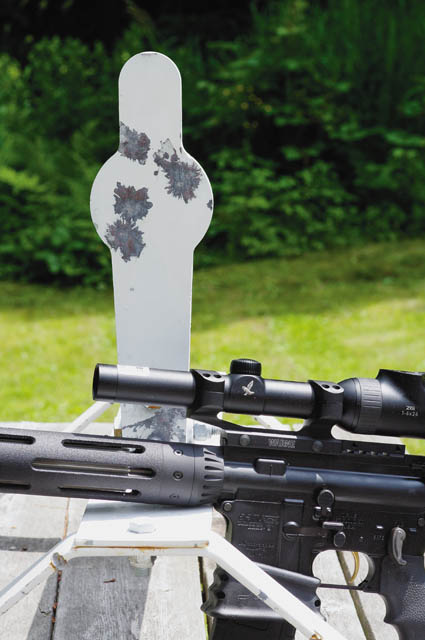
It's also important to have an accurate rifle with good ammo and a good trigger. Many of the rifle targets you encounter will require precision shooting. Good luck trying to hit the Auto Popper's 4-inch center at 300 yards with a rifle that's barely capable of 5-inch groups at that distance and a trigger that takes an NFL defensive lineman to pull.
Any Target that Requires Shooting from an Awkward Position
The Target
The other thing everybody stressed over is that stage designers are coming up with very awkward positions from which to shoot. At the Tri-Gun Challenge last year, we had to shoot while lying on our sides in the bucket of a front-end loader. It wasn't pretty.
The Strategy
To a man, my consulting team stressed practicing rifle shooting from odd positions. Also, learn to shoot while you are short of breath. Time and again I have looked at a stage, thinking it's going to be easy, but I forget the physical challenge that comes before it. I don't care how good shape you're in, sooner or later you will need to shoot while breathing hard. You can't afford the time to wait for normal breathing to return, so learn how to shoot between gasps.
The two stages that took my lunch money at the 2010 Ironman both had long-range rifle targets engaged from awkward positions. I shot the rifle part clean on both, but took so long because of the positions, I timed out before finishing the rest.
One popular prop is a slanted incline intended to represent a roof. It looks easy, until you try it the first time. You will probably find your 30-round magazine is so long it hits the roof and you can't get the gun steady. One tip from Neth: Use a coupler with two 30-round mags. The wider bottom is more stable. Many shooters use a Beta Mag for the same reason or shoot a shorter 20-round mag.
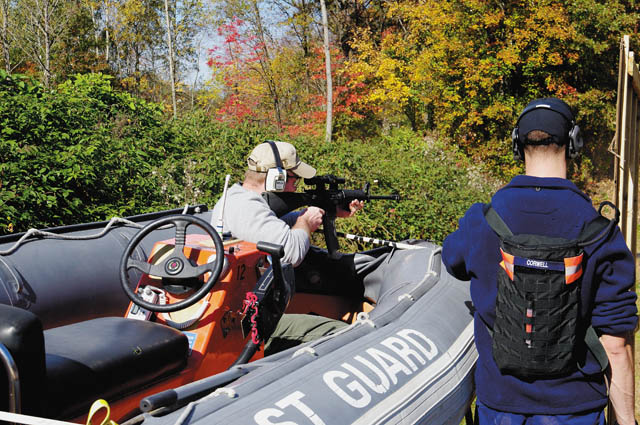
Another problem is you can't seem to be able to hold yourself in position and you keep sliding down the roof. You've got to figure that one out on your own—Velcro kneepads maybe?
Practice for these targets and you will have a leg up at the next match. At least until the stage designer finds another new way to torture, torment and challenge you, which of course, they will!
FOOTNOTE
Towsley would never hit any targets if it weren't for the help of the following shooters, who also gave advice in putting together this article: Matt Burkett, Carl Carbon, James Darst, Matt Foster, Mike and Travis Gibson, Mark and Tasha Hanish, Tony Holmes, Randy Luth, Charles "Tate" Moots, Scott McGregor, Dave Neth, Travis Noteboom, Vu Pham and Bruce Piatt.















